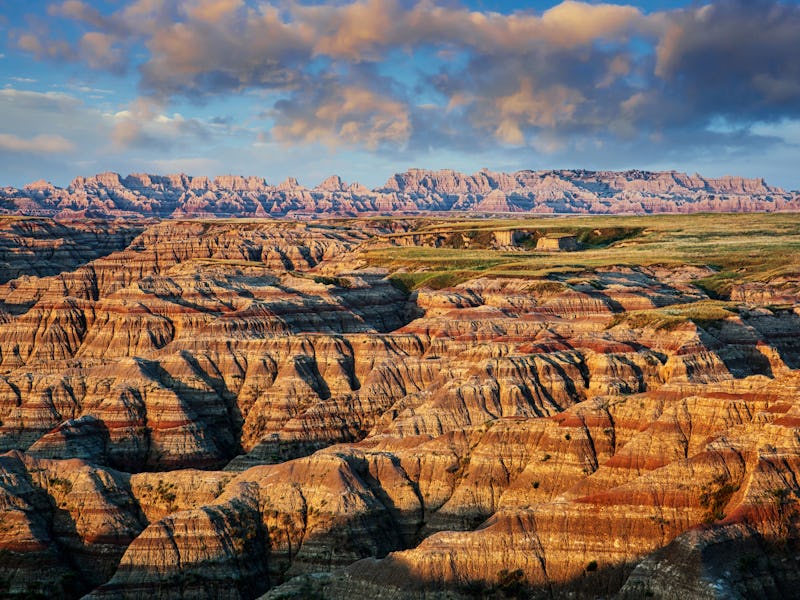Do national parks hurt or help local economies? 25 years of data reveal conclusive evidence
“I hope we’ve laid to rest — or come close to laying to rest — the arguments about the effect on the economy."

United States' national parks like Bears Ears and the Grand Staircase-Escalante in Utah are a matter of pride for many, but the contribution of these national monuments to the health — and wealth — of local economies is hotly disputed.
Complaints by those in opposition include that, by taking up space, they curtail and diminish economic growth by hindering industrial development, including mining, energy exploration, and commercial enterprise.
But a new study based on 25 years of data suggests these claims may be unfounded.
The study contradicts the current administration's reasoning behind a number of moves to scale back America's national monuments.
In 2017, for example, the Trump administration sparked outrage when it announced that the size of two national parks in Utah, Bears Ears and the Grand Staircase-Escalante, would be sharply reduced — by over 2 million acres. It was the largest rollback in federal land protection in the history of the United States.
The land was opened up, it was reported, in order to be used by energy developers and ranchers. In addition, Trump also ordered 27 monuments that had been created over the previous two decades, mostly in the west, to be investigated and reviewed; his reasoning being that their original designations were a “massive federal land grab”, and it was time to “end these abuses and return control to the people, the people of all of the states, the people of the United States.”
In fact, the new study’s findings show that national monuments like these parks help — not hinder — local economies. The results stem from 25 years of data, collected across eight states in the US West. The data reveal that the designation of national monuments actually increased the average number of establishments and jobs in the areas of the monuments, as well as boosting the average growth rate of establishments.
The findings were published Wednesday in the journal Science Advances.
Cultural, historic, and economic importance
National monuments include any area that has been set aside as "protected" because it is home to something of historical or cultural importance, like historical landmarks or prehistoric structures. Most of these lands are protected by the Antiquities Act, a 1906 law enacted by President Theodore Roosevelt. The century-old law allows presidents to turn public land into national monuments that can then be protected from exploitation or commercialization. But this protection is increasingly under threat of erosion, whether because they may also be used for fossil fuel extraction or another industrial use.
The study looked at 14 monument designations made between 1990 and 2014 in eight Mountain West-region states. On average, the number of business establishments and jobs in areas near the monuments — within 25 kilometers (or 15.5 miles) — increased after designation. Most of the increases were in service industries, including health services, hotels and lodging, business services, and financial services.
By contrast, some industries showed no change whatsoever; these were typically industries that relied on public lands, such as mining or forestry. The researchers also found designations had no effect on average wage incomes.
“Our results suggest that national monuments in some ways help local economies,” the author Margaret Walls, a senior fellow at Resources for the Future, tells Inverse, “and in other ways, have no effect at all.”
This last finding is important, Walls says, as some people make the argument that high-wage jobs, such as mining, are replaced by low-wage ones, such as service jobs, when monuments are designated.
As the researchers write in the study:
Our results suggest that protecting some of these public lands as national monuments does not exacerbate these trends but rather could even be reversing them and creating a new set of economic forces oriented around the historic, cultural, and scenic amenities these public lands provide.
The new research echoes previous findings showing that employment, population, personal and per-capita income all rose after the creation of monuments in adjacent communities in western continental states.
On top of being a boon to the economy, these national monuments offer a host of other benefits to society, from wildlife conservation to carbon sequestration. These lands are also often a means of protecting historical Native American artifacts and structures that remain sacred to tribes.
Going forward, Walls hopes that future discussions about the designations of monuments, and other protected lands, will focus less on the economic impacts, such as jobs or wages, and more on the value of the sites and what needs to be done to protect them properly.
“I hope we’ve laid to rest — or come close to laying to rest — the arguments about the effect on the economy. Monuments protect sites with important cultural, historic, and scientific resources,” she says.
Abstract: National monuments in the United States are protected lands that contain historic landmarks, historic and prehistoric structures, or other objects of historic or scientific interest. Their designations are often contentious. Opponents argue that monuments hurt local economies by limiting uses of public lands, while supporters counter that monuments create a new amenity-driven economy. We use panel data on all business establishments in the eight-state Mountain West region to estimate economic impacts of 14 monument designations over a 25-year period. We find that monuments increased the average number of establishments and jobs in areas near monu- ments; increased the average establishment growth rate; had no effect, positive or negative, on the number of jobs in establishments that existed pre-designation; and had no effect on mining and other industries that use public lands. On net, protecting lands as national monuments has been more help than hindrance to local economies in the American West.